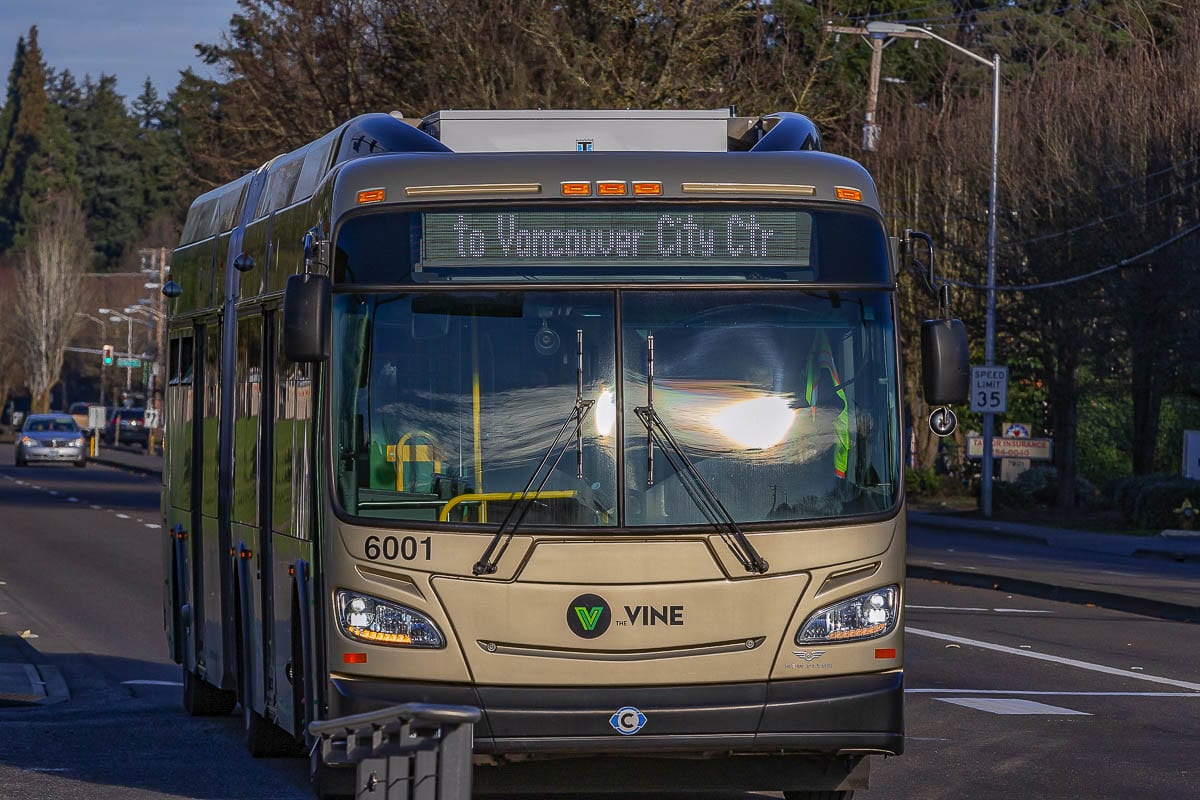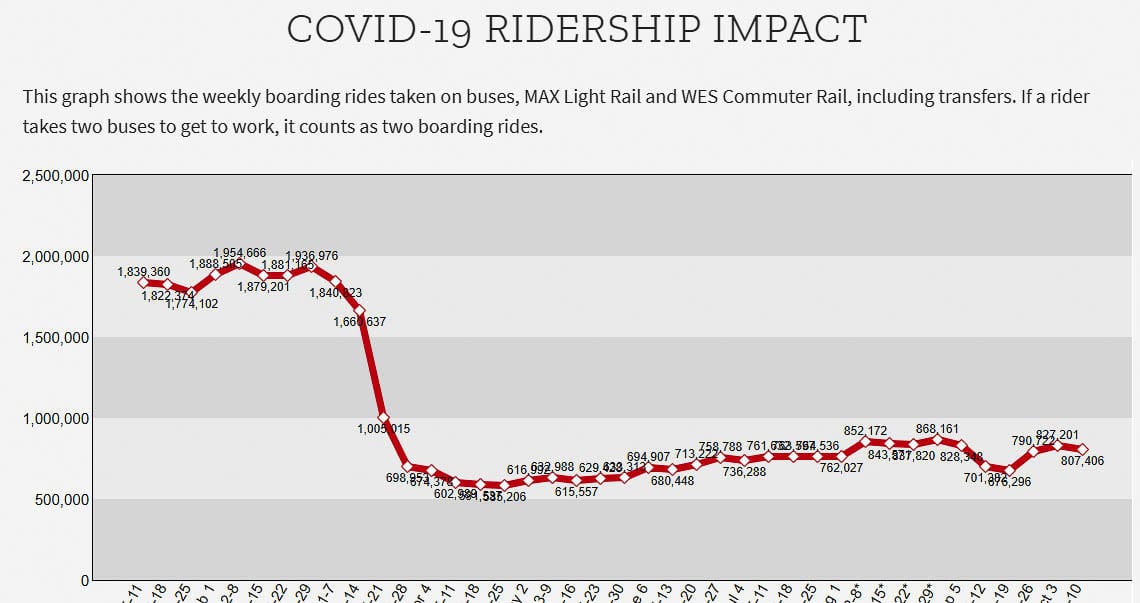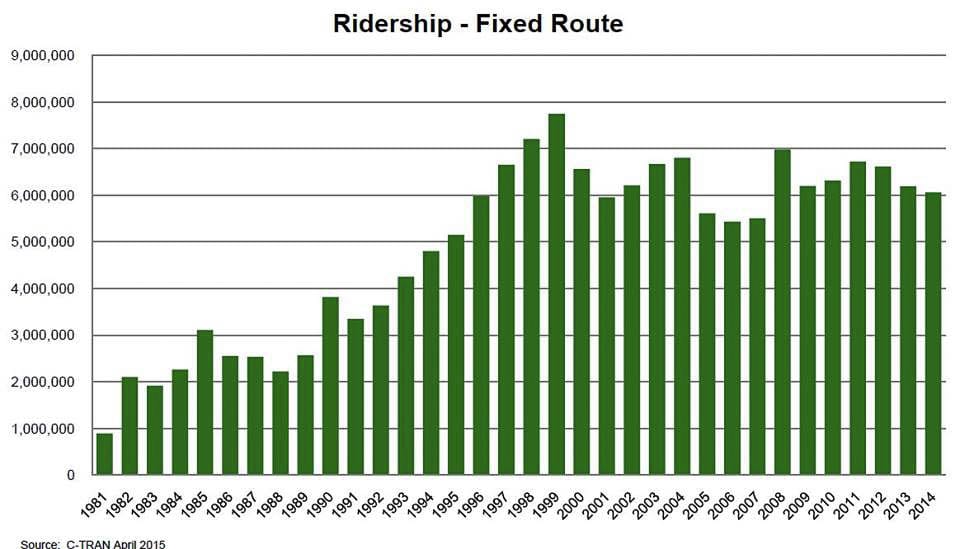Significant ridership decline questions need for ‘Purpose and Need’ statement consideration
At the recent Bi-State Bridge Committee meeting of 16 members of the Washington and Oregon legislatures, Rep. Vicki Kraft asked the committee members what many citizens believe is a very appropriate question: “I would ask the question, what is the need for transit?“

Kraft is not a member of the Bi-State Bridge Committee, and her question was asked during the public comments portion near the end of the virtual meeting, so the members of the committee were not obligated to provide her an answer. But, Kraft’s question certainly would appear to deserve some examination by those who are tasked with examining the details of an Interstate 5 Bridge replacement project. That is especially the case because the inclusion of transit service was such a volatile topic during the failed Columbia River Crossing project.
C-TRAN provides the only transit service across the Columbia River. TriMet’s MAX light rail transit service ends at Delta Park.
In the era of COVID-19, people have been working from home to “stay home and stay safe.’’ Transit ridership declined precipitously on a national basis and also in the Portland metro area. There are likely many reasons for that change in the behavior of those commuters.
On Monday, the Centers for Disease Control issued a strong recommendation for masks on mass transit and public transportation which may impact people’s willingness to use public transportation. The CDC said the agency “strongly recommended” anyone using public transportation to wear masks during their rides, while waiting at transportation hubs and while boarding planes, trains and buses. The agency also said that all public transportation workers should also wear masks.

On March 30, C-TRAN made temporary reductions to express bus service to Portland due to COVID-19 and declining ridership.
Affected routes include Routes 105, 134, 157, 164, 177 and 199. The number of daily trips and buses on each route will be reduced, as will the frequency during the morning and afternoon commute times. Route 177 was temporarily suspended according to a C-TRAN press release.
C-TRAN offers seven express bus lines from Vancouver to Portland. They travel both the I-5 and the I-205 corridors. C-TRAN recently provided the following data on express bus ridership from 2016 through the end of August. (See previous Clark County Today story here.)
Average weekday ridership:
• 2016 – 3,040
• 2017 – 2,874
• 2018 – 2,844
• 2019 – 2,892
• 1/1/2020 – 8/31/2020* – 1,213
C-TRAN provided the following statement in response to those ridership totals: “Commuter ridership has declined 58.2 percent (due to COVID-19). Commuter ridership includes Express bus routes only.” Asked how much express ridership has increased from its lowest levels, C-TRAN reported: “The sum of the average previous five weeks ending May 16, 2020 compared to the same period ending the week of Sept. 26, 2020 reflects a 23.7 percent increase in commuter boardings.
One person boarding on their morning commute to work in Portland catches an express bus twice a day, once in the morning and once in the evening. This would indicate 1,446 people rode any of the seven bus lines in 2019. That number has declined to 607 people per day in 2020.
The Southwest Washington Regional Transportation Council estimated that an average of about 305,000 vehicles crossed the Columbia River daily in 2019. The one-day record for total crossings was 347,758 vehicles on Fri., June 28, 2019.
An Oct. 2 report by Clark County Today on the Bi-State Bridge Committee (see story here) indicated how the “Purpose and Need’’ statement plays a role in whether or not certain transit options would be eliminated. The language regarding transit stated it “must improve transit performance within the bridge influence area.” (The bridge influence area was defined as 2 and one half miles either side of the border.)
So, is there a need for more transit on the Oregon side of the river?
Looking at TriMet data for the Portland metro area shows similar levels of a decline in ridership as C-TRAN has experienced, both prior to the current pandemic and during the pandemic. TriMet data shows a 50 percent decline in its transit ridership due to COVID-19 since the beginning of the year.
“This graph shows the weekly boarding rides taken on buses, MAX Light Rail and WES Commuter Rail, including transfers. If a rider takes two buses to get to work, it counts as two boarding rides.” explains TriMet. That means someone who rides a bus and then transfers to light rail to go to work actually counts as four boardings on a single day; one bus and one light rail boarding each way.
How many people is TriMet serving, taking them out of their cars? Assuming most people ride both ways on transit, the current 807,400 weekly boarding rides would indicate at most 403,700 people served each week “if” none of them transferred and boarded more than one bus to get to their destination..
TriMet bus ridership peaked in 2009 at 66 million passenger boardings and was down to 56 million in 2018. Their MAX light rail ridership peaked also.
C-TRAN shared the following regarding ridership.
“Transit agencies across the United States have seen significant drops in ridership due to COVID-19 this year. C-TRAN has, too, though the ridership drop we’ve seen in 2020 has been smaller than most other transit agencies in Washington. This underscores the importance of public transportation in Clark County, that so many of our riders depend on transit to make trips for essential needs or other reasons. This year’s ridership decrease comes after three consecutive years of total ridership increases in 2017, 2018 and 2019. As the above data show, ridership has started to bounce back in recent weeks, though we remain well below pre-pandemic levels. C-TRAN will continue to provide safe transit service for our community, as we have throughout the pandemic.”
C-TRAN ridership peaked in 1999 from about 7.7 million annual boardings to 6 million boardings in 2014.

In the proposed Columbia River Crossing project, $850 million of the $3.5 billion was the price of adding light rail to the project. Now that legislators from both states are evaluating the “purpose and need” statement as part of their discussions, many citizens believe Rep. Kraft asked an appropriate question.
Following the COVID-19 pandemic, will people continue to work from home? Will people continue to avoid riding transit? Is there a need for any form of high capacity transit on a replacement Interstate Bridge?
“Given the reality of the lack of demand for transit and the continually declining ridership of C-TRAN, we should be using the precious transportation funds we have on meeting the need of our commuters who drive their vehicles to work,” said Kraft. “That means we should be investing this money into building additional road lanes across the Columbia River into Portland, not wasting those dollars on transit which very few people use. It’s vital that we build a third bridge now to address our commuters’ need for more capacity and our region’s future growth.”




